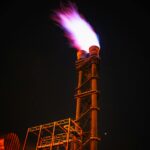Introduction
The convergence of digital technology with traditional engineering is reshaping how we design, operate, and manage chemical processes. One of the most exciting and transformative innovations in this space is the emergence of smart reactors and autonomous chemical plants. These intelligent systems promise unprecedented levels of efficiency, safety, and sustainability by combining advanced sensors, machine learning, and real-time process control.
As industries face increasing pressure to minimize waste, optimize performance, and reduce environmental impact, the adoption of automation and data-driven decision-making has become a competitive imperative. This article delves into how smart reactors and autonomous plants are redefining chemical manufacturing and what this means for engineers, researchers, and industrial stakeholders.
What Are Smart Reactors?
Smart reactors are not just upgraded versions of traditional reactors—they represent a paradigm shift. These systems integrate real-time monitoring, predictive analytics, and self-optimization capabilities to adapt dynamically to changing conditions.
Key Features:
Real-Time Data Acquisition: Smart reactors are equipped with an array of sensors that continuously collect data on variables such as temperature, pressure, flow rate, and concentration.
Predictive Algorithms: Machine learning models analyze this data to predict system behavior and detect anomalies before they become critical.
Autonomous Control: Based on predictive outputs, smart reactors can adjust parameters like feed rate or heating power automatically, ensuring consistent performance without human intervention.
Remote Monitoring: These systems often include cloud connectivity, enabling engineers to monitor and control operations from remote locations.
Practical Example
Consider a catalytic reactor used in pharmaceutical production. A smart system can detect slight variations in catalyst performance, predict the impact on yield, and adjust residence time or temperature in real time to compensate—significantly reducing batch failure rates.
What Is an Autonomous Plant?
An autonomous plant is a fully integrated chemical processing facility that leverages digital technologies across every unit operation. The entire system operates with minimal human intervention, relying on a combination of IoT devices, artificial intelligence, and control algorithms.
Components of an Autonomous Plant:
Industrial IoT (IIoT): Connects machinery and sensors across the plant, creating a data-rich environment.
Digital Twins: Real-time virtual models of equipment and processes used for simulation, troubleshooting, and optimization.
Advanced Process Control (APC): Sophisticated algorithms that maintain optimal operating conditions across complex, interdependent systems.
AI-Driven Decision Making: From predictive maintenance to supply chain optimization, AI supports strategic and operational decisions.
Benefits:
Increased Efficiency: Optimizes resource use and reduces downtime.
Improved Safety: Detects and mitigates risks before they escalate.
Lower Operational Costs: Automates routine tasks and minimizes waste.
Scalability: Rapidly adjusts to new production demands or market conditions.
Industrial Applications and Success Stories
Leading chemical and energy companies are already piloting and deploying smart reactors and autonomous systems:
BASF: Uses AI to optimize reaction conditions in pilot plants, reducing development time for new compounds.
Shell: Implements real-time monitoring systems in refineries to adjust operations dynamically based on energy consumption and emission targets.
Dow Chemical: Invests in autonomous manufacturing technologies to improve plant reliability and lower energy use.
These companies have demonstrated that integrating smart systems doesn’t just enhance performance—it also offers a measurable return on investment.
Challenges and Considerations
While the promise of smart and autonomous systems is substantial, implementation is not without hurdles:
Data Integration: Merging legacy systems with new digital platforms can be complex.
Cybersecurity: As connectivity increases, so do vulnerabilities to cyber-attacks.
Skilled Workforce: Engineers must acquire new skills in programming, data science, and digital control systems.
Regulatory Compliance: Ensuring that AI-driven decisions align with industry standards and safety regulations is critical.
The Role of Engineers
For chemical engineers, this digital transformation represents both a challenge and an opportunity. Professionals must evolve from traditional process roles into hybrid roles that combine domain knowledge with digital fluency.
Skills in Demand:
Proficiency in Python, MATLAB, or R for data analysis.
Understanding of control theory and automation systems.
Familiarity with cloud computing, digital twins, and simulation tools.
Ability to collaborate across disciplines—working with data scientists, IT professionals, and process experts.
Future Outlook
The future of chemical manufacturing lies in autonomous operations where machines learn from data, systems self-optimize, and human operators oversee complex decisions rather than manual tasks. As smart reactors and autonomous plants become more mainstream, they will redefine productivity benchmarks and safety standards.
The shift is not only technological but cultural, requiring organizations to rethink training, investment, and operational philosophy. Those who adapt quickly will lead the next generation of sustainable, intelligent manufacturing.
Conclusion
Smart reactors and autonomous plants are no longer theoretical—they’re becoming a commercial reality. By leveraging data, automation, and AI, these systems promise to revolutionize the chemical industry. For engineers, embracing this change means acquiring new skills, adopting new tools, and thinking beyond the traditional boundaries of process engineering.
















